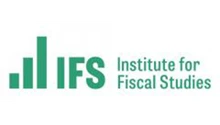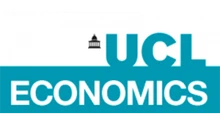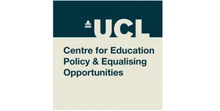Given the precarious state of the UK’s public finances, there has been speculation about whether a loan from the International Monetary Fund will be needed, as happened in 1976. What’s really required is a reformulation of the fiscal framework to establish a credible commitment for fiscal policy.
The UK’s public finances are in a precarious position. The ratio of public debt to GDP (a measure of a country’s ability to pay back its debts) is persistently hovering at around 100% and the costs of servicing that debt rising to just under 4% of GDP in the fiscal year 2025/26.
In recent weeks, these figures have led to much talk about the country’s economic crisis of the mid-1970s and whether, as happened then, a loan from the International Monetary Fund (IMF) will be needed to bail out the economy.
In Ernest Hemingway’s novel The Sun Also Rises, one of the characters is asked how he went bankrupt. The answer: ‘Two ways. Gradually, then suddenly.’
This is the kind of fear that stalks countries with high public debt like the UK. Indeed, in its July 2025 report, ‘Fiscal risks and sustainability’, the Office for Budget Responsibility (OBR) laid out the dynamic that could lead to a ‘sudden stop’ in the country’s ability to access bond markets: ‘debt has also continued to rise and borrowing remained elevated because governments have reversed plans to consolidate the public finances. Planned tax rises have been reversed, and, more significantly, planned spending reductions have been abandoned.’
This fiscal vulnerability – the risk that a government may be unable to meet its financial commitments – stems from structural weaknesses in the UK’s fiscal framework, which does not act to bring down public indebtedness and has caused mounting concerns in financial markets. The OBR may mark the chancellor’s homework, but the Treasury still provides the grades.
A reformulation of the fiscal framework would be highly desirable, not least to move beyond the narrow focus of our national economy policy debate on changes in ‘fiscal space’ – the difference between the OBR’s forecast of public debt relative to the target. As a nation, we should surely be asking more fundamental questions about what it is that we want from our public services, how we can fund them and how that all fits with our pursuit of higher productivity growth and improved living standards. Alongside any plan for public services, we urgently need a medium-term programme for a fiscal consolidation that will, in expectation, bring down public indebtedness.
Credible commitment
We know that politicians or the state have an incentive to re-optimise plans once the private sector has made its choices – for example, by changing taxation arrangements after being elected. Or they may have an inbuilt bias to stoke output and employment in the run-up to an election (Kydland and Prescott, 1977). This ‘political business cycle’ tends to be injurious to policy-making for long-run economic performance and leads to damaging short-termism (Nordhaus, 1975).
The search for technologies of credible commitment that will address the problem of short-term incentives for policy-makers has been an enduring feature of modern macroeconomic policy-making across the world.
The UK’s adoption of central bank independence in May 1997 has been widely lauded as a success. But the country’s establishment of fiscal rules – limits imposed by a government on its tax raising and public spending – refereed by the OBR is increasingly judged as an ill-conceived failure, and it has underpinned the nervousness in bond markets about the fiscal position.
Fiscal rules
Since the establishment of the OBR in 2010, the fiscal rules in the UK have changed regularly (Chadha et al, 2021). So we should not expect them to be ‘timeless’ in the way that we tend to think about the Bank of England’s inflation target and its objective of price stability. Currently, they are described as follows (Keep, 2025):
‘For the forecast for 2029/30:
- The day-to-day budget (or current budget) should be in surplus. This means that government’s day-to-day spending should be met by its revenues. The government would, therefore, be forecast to only be borrowing for investment (capital) spending.
- Public sector net financial liabilities should be falling, relative to the size of the economy, compared with the previous year (2028/29). The government describes public sector net financial liabilities as “net financial debt”.
From 2026/27, once 2029/30 becomes the third year of the forecast, the rules change and the target year will become the third year of the forecast. The rules will then be that:
- The day-to-day budget should be in surplus or deficit of no more than 0.5% of GDP in the third year of the rolling forecast period.
- Public sector net financial liabilities should be falling by the third year of the rolling forecast period.
The rule on the current budget is the government’s main target or “fiscal mandate”.’
In recent publications, I have outlined many of the problems with the fiscal rules and mandate that the UK has adopted (Chadha, 2023, 2024). They have trivialised our national debate on fiscal policy by focusing on slithers of fiscal space – the difference between the OBR’s forecast of debt relative to the target – rather than asking what it is that we want from public services and how we can fund those requirements. This means that we have not established a clear understanding of how or whether well-designed fiscal policies can support the supply-side (production of goods and services within the economy), and so improve productivity and tax revenues in the longer run.
The reliance on forecasts has two major problems. First, forecasts will nearly always be wrong and are thus a poor lodestone for the assessment of policy: at best, they are noisy information for the choice of policy instrument and ought not to be used for high frequency demand management. But second, the use of forecasts means that debt bygones are just that: there is no fiscal force in the rule getting us back to a sustained fall in the ratio of debt to GDP (House of Lords Economic Affairs Committee, 2024).
In the language of economists, stationarity of debt-to-GDP simply does not follow from these rules. Debt could be expected to rise for several years but still pass a rule that only requires a fall in the last year – and so debt could be higher four to five years from now and still pass the rule.
1976 and all that
By mid-1976, shortly after Harold Wilson had resigned as prime minister that March, the UK faced a sterling crisis and a loss of international market confidence (Mortimer-Lee, 2025). Inflation had peaked at over 25% in 1975 and although it was falling in 1976, it was still over 15%. The fiscal deficit was 9% of GDP. Sterling was plunging from $2.30 (in early 1976) to under $1.60 by October 1976. The Bank of England’s foreign exchange reserves were being rapidly depleted and the gilt market was under severe stress (Burk and Cairncross, 1992).
Accordingly, in December 1976, the Labour government (now with James Callaghan as prime minister and Denis Healey continuing as chancellor) negotiated a record $3.9 billion IMF standby loan.
The IMF programme was not primarily about the money, as less than half was eventually drawn. One study argues that the sterling crisis was initiated by co-operation between to the Bank of England and the Treasury to lower the value of sterling and replenish foreign exchange reserves in early 1976, but the whole process got out of hand and private dealers also started to sell sterling, leading to Bank losses of reserves of £5.5 billion between March and November 1976 (Naef, 2022).
Under the programme and the ‘letter of intent’ signed by Healey on 15 December 1976, the IMF required a fiscal tightening amounting to £2.5 billion of spending cuts (around 2% of GDP) and monetary control to ensure price stability with a ceiling on domestic credit expansion. The adoption of the IMF programme served to regain some market credibility and hence stabilise sterling and reassure bond markets. As the UK had a floating exchange rate, there was no formal devaluation, but the pound adjusted more smoothly and stabilised to go above $1.80 by early 1977. Inflation halved within two years.
One commentator describes the crisis as the culmination of three overlapping issues: ‘a sterling crisis; a sovereign debt crisis; and heavily leaked factional frictions within the governing Labour administration’ (Richards, 2016). To some extent, these issues are echoed today.
The 1976 crisis heralded the end of the post-war Keynesian consensus in the UK. As Callaghan famously told the Labour Party’s annual conference in September that year: ‘We used to think that you could spend your way out of a recession and increase employment by cutting taxes and boosting government spending. I tell you in all candour that that option no longer exists, and in so far as it ever did exist, it only worked on each occasion since the war by injecting a bigger dose of inflation into the economy, followed by a higher level of unemployment as the next step.’
The Labour’s government decisions were part of a worldwide shift away from the Keynesian practice of demand management – trying to use upward and downward changes in taxes and public spending to steer the economy (Chadha, 2015). The policy orthodoxy shifted to fiscal discipline (strengthening the dominance of finance ministries like the Treasury over public spending) and monetary controls (emphasising the importance of the central bank managing the money supply and interest rates).
This was the precursor to Margaret Thatcher’s medium-term financial strategy or ‘monetarism’ – the set of policy prescriptions espoused by economists like University of Chicago professor and Nobel laureate Milton Friedman, which upholds that it is control of the money supply that primarily determines economic stability and growth (Lawson, 1992).
Ultimately, the whole episode represented a significant turning point with market confidence becoming the central objective of policy.
Bond markets
Returning to more recent times, the normalisation in policy rates after the inflation of 2021/22 acted globally to push longer-term interest rates back into the more familiar territory of 3-5% rather than the extraordinarily low rates during the period of quantitative easing (QE).
But fiscal authorities – the government departments responsible for the public finances – took the opportunity of low borrowing rates to increase public indebtedness in a persistent manner. In the UK, for example, public sector net borrowing has hovered around 5% of GDP in each of the fiscal years 2021/22, 2022/23, 2023/24 and 2024/25.
The UK has been particularly vulnerable to the shocks of the past decade and fiscal support has been relatively generous, leaving the level of fiscal indebtedness and its likely future path hugely problematic.
A serious and credible plan for fiscal consolidation (reduction of public debt) is desperately required, as financial markets are forward-looking and projecting severe problems in the future unless the Gordian knot of higher public investment, limited tax increases and reining in of the state (with total managed expenditure at 45% of GDP compared with a post-war norm of 40% or so) is tackled.
While we have to be careful in making comparisons in bond yields across countries (see Table 1), higher rates in the UK, at the very least, indicate some inflation or credit concerns for the economy. There is also growing evidence that the reversal of QE, quantitative tightening, which ought not to have affected bond prices in deep and liquid markets (Tenreyro, 2023), has in fact helped to push UK bond prices down. This is suggestive of some liquidity constraints in the bond markets.
Table 1: G7 debt and interest rates
| Debt/GDP (%) | Policy rate (%) | 10-year (%) | 30-year (%) | |
| Canada | 111 | 2.75 | 3.19 | 3.62 |
| France | 113 | 2.15 | 3.48 | 4.31 |
| Germany | 63 | 2.15 | 2.69 | 3.28 |
| Italy | 135 | 2.15 | 3.51 | 4.45 |
| Japan | 237 | 0.50 | 1.60 | 3.22 |
| UK | 96 | 4.00 | 4.64 | 5.47 |
| United States | 124 | 4.25-4.50 | 4.06 | 4.68 |
Source: Trading Economics and OECD on 12 September 2025. The Federal Reserve, the US central bank, cut its key policy rate, the federal funds rate, to a range of 4.0-4.25% on 17 September.
A credible commitment for fiscal policy
The call for the ‘Boys from the IMF’ echoes the influence that Chicago-trained economists had in Latin America in the 1970s, bringing policy prescriptions from Milton Friedman and colleagues to countries with chronic inflation problems. (The Chicago school of economic thought also emphasised limited government intervention and the benefits of the free market.)
Essentially, if the domestic government has no mandate or sufficient influence in parliament to bring about a fiscal consolidation, then an external device may be employed, for example, under the auspices of an IMF programme. The rationale for the UK joining the exchange rate mechanism of the European Monetary System in 1990 was similar, seeking to use the external disciplining device of the Bundesbank (Germany’s powerful central bank) to bring about price stability in the UK.
Right now, given that IMF funds under the auspices of a stand-by agreement is not what we need this side of a ‘sudden stop’, what is required to prevent a crisis is the reformulation of our fiscal framework. This might involve a ‘fiscal council’ judging our actual fiscal performance and providing a report on progress towards an agreed fiscal consolidation plan. We need to tie public expenditure and taxes to a stronger mast.
The fiscal council would comprise independent experts, as well as Treasury mandarins in a similar vein to the set-up of the Bank of England’s Monetary Policy Committee (MPC). It would interact with the OBR to assess the probability of meeting a fiscal consolidation, which would be defined on a rolling basis, as well as addressing society’s requirements for the provision of public goods.
For this parliament, the aim would be to get the ratio of public debt to GDP down to something approaching 90% of GDP, but the target is itself something for which we need a national debate and a political mandate.
Too much UK economic policy is still made up ad hoc as a result of the snap political judgement of politicians or during a crisis rather than in the long-term interests of the country. That is why markets can be sclerotic and ultimately why countries could eventually go bankrupt.
Where can I find out more?
- Goodbye Great Britain: The 1976 IMF crisis: a 1992 book by Kathleen Burk and Alec Cairncross, published by Yale University Press.
- The View from No. 11: a 1992 book by former chancellor Nigel Lawson, published by Bantam Press.
- Changing Times: Economics, Policies and Resource Allocation in Britain since 1951: a 2020 book by economic historian Martin Chick, published by Oxford University Press.
- Where the great experiment went wrong: a 2015 Gresham College lecture by Jagjit Chadha.
- Designing a new fiscal framework: understanding and confronting uncertainty: a 2021 report from the National Institute of Economic and Social Research (NIESR) edited by Jagjit Chadha, Hande Kucuk and Adrian Pabst.
- Why Britain needs an IMF programme: August 2025 blog post by Paul Mortimer-Lee.
- Why Britain’s economy is broken: September 2025 Prof G Markets podcast interview with Jagjit Chadha.
- Professor Jagjit Chadha on why the UK faces a 1976-style fiscal meltdown: When the Facts Change podcast episode, September 2025.
Who are experts on this question?
- Bill Allen
- Kathleen Burk
- Jagjit Chadha
- Martin Ellison
- Campbell Leith
- Paul Mortimer-Lee
- Alain Naef
- Charles Nolan
- Silvana Tenreyro









































